Planting Onions
Onions are one of the easiest vegetables to grow. We grow enough onions each summer to last us all year. This year we planted 2 varieties, Yellow Copra and Red Zeppelin. Both are supposed to store well.
Some onion history factoids:
- It is thought that onions were first cultivated in Egypt in about 3000 BC.
- In the Middle Ages, onions were so valued that they were used to pay rent, and given as gifts.
- They were introduced to North America during Columbus’ voyage to Hispaniola in 1492.
If you plan on growing your own onions, onion plants is the best way to go. Onion plants come in bunches, and are available at your local garden center, purchased through a mail order catalog, or can be found at your grocery store. They can stand some frost, but not below 20 degrees. Here in the Midwest, we usually plant onions in late March or early April. They do best in full sun in well cultivated soil. To plant, mark a row with a sting drawn taught between 2 posts. Dig a trench about 2 inches deep.
Space the onions about 3 inches apart.
Space rows 12-15 inches apart. Fill the trench with soil holding each onion upright as you fill the soil around it.
Gently press the soil down around the onions.
Water gently with a hose with a sprinkle attachment, or a sprinkling can.
Onions need to be watered once a week in dry weather. Control weeds by mulching with straw, hand pulling, or shallow hoeing. Most onions will be ready for harvest at 90-120 days. When the tops start to fall over and dry, they are ready. Pull them up gently by the tops, and cure in a warm, dry, well- ventilated location for 2 to 4 weeks or until the outer scales of the onion are papery and thin. Cut the tops off at this point, and store the onions in a mesh bag, wire basket, or open crate in a cool (32 to 40°F), dry location. Temperatures below freezing will damage the bulb and shorten storage life. I’ll have posts later showing the progress of our onion plants.

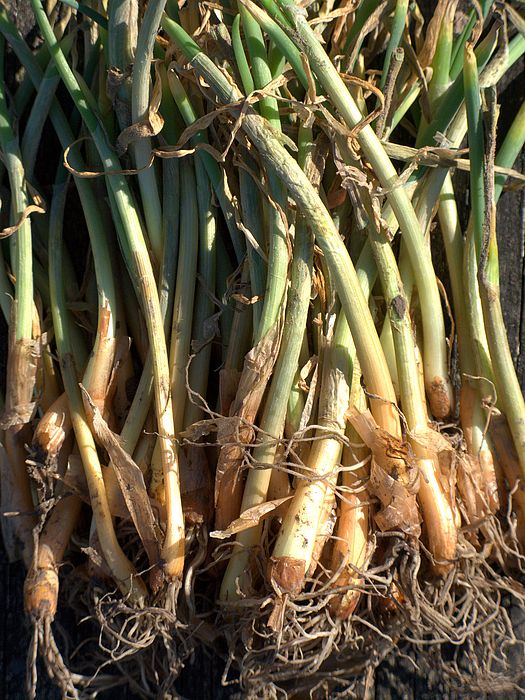
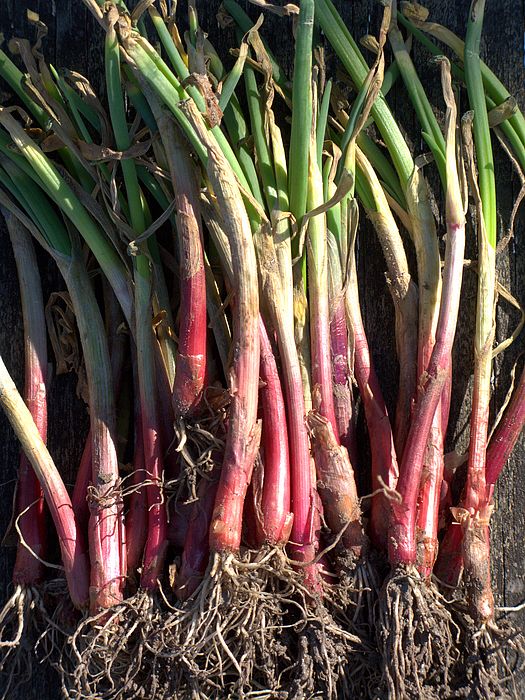
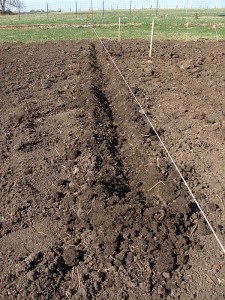
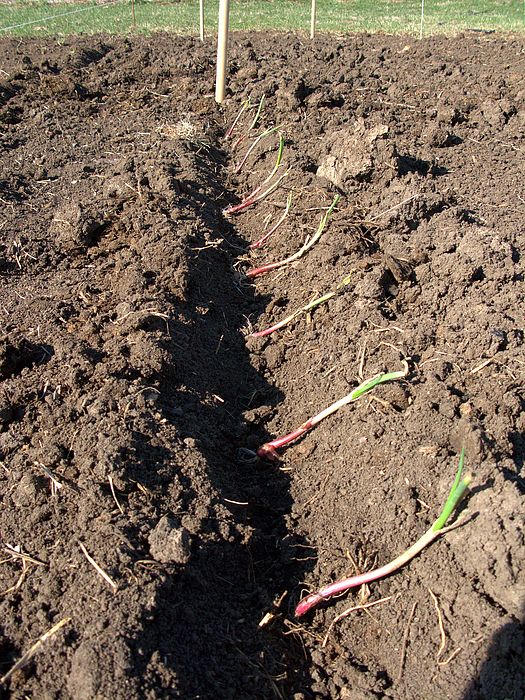
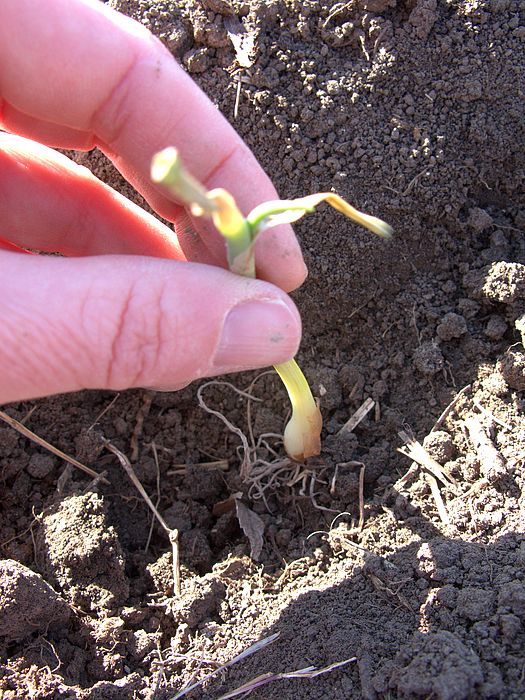

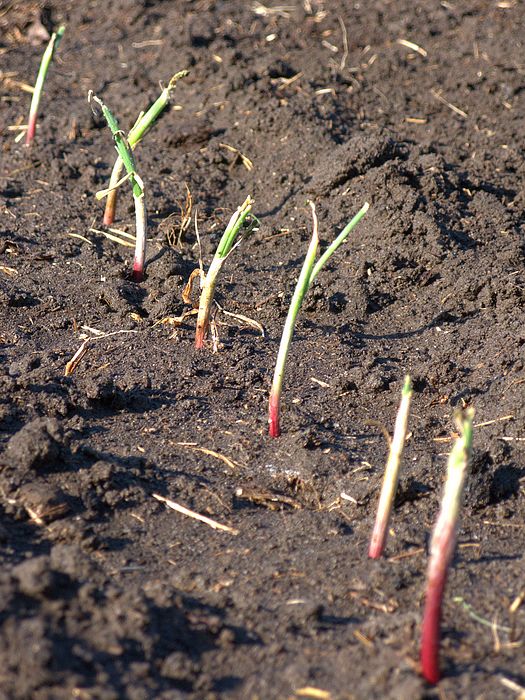
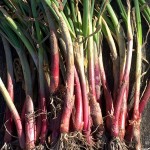
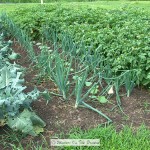


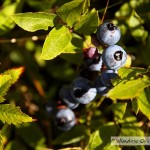
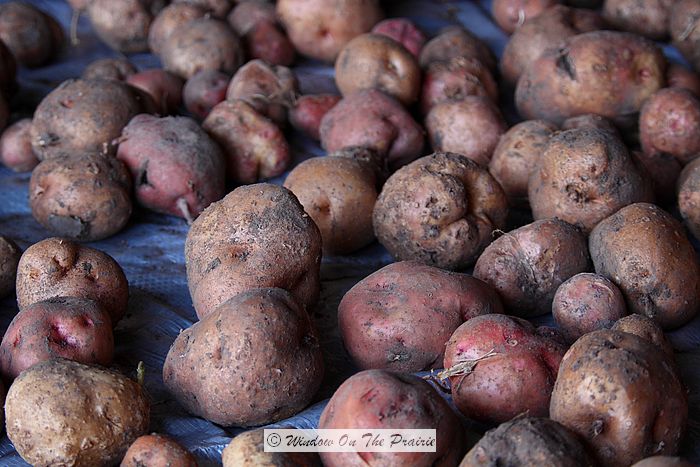
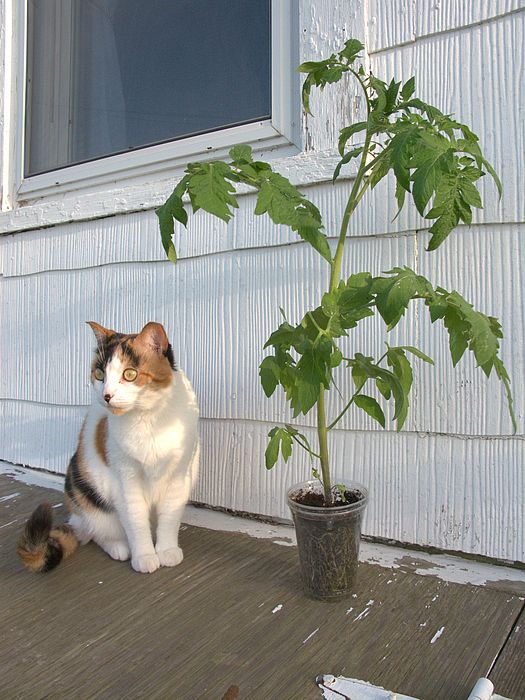
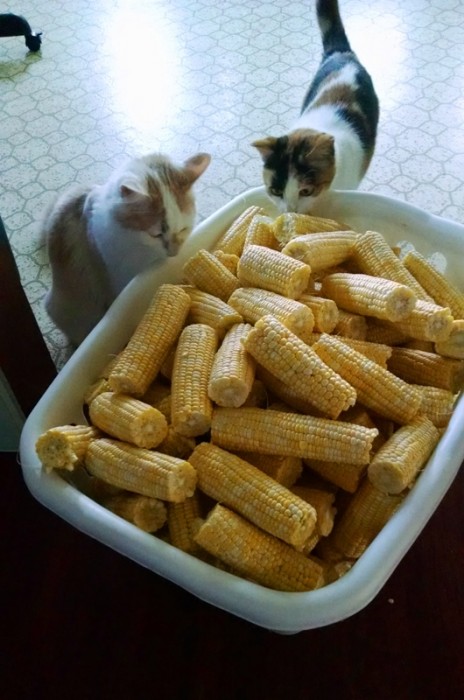
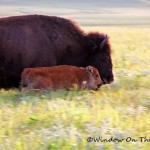
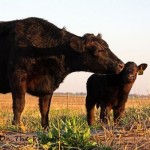
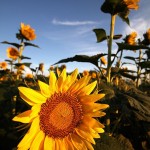


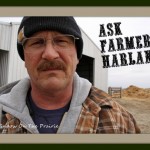




I really enjoy the little history segments of your posts. They are very interesting!
Thanks for letting me tag along while you guys plant your garden.
My peas in a half barrel just don’t compare!